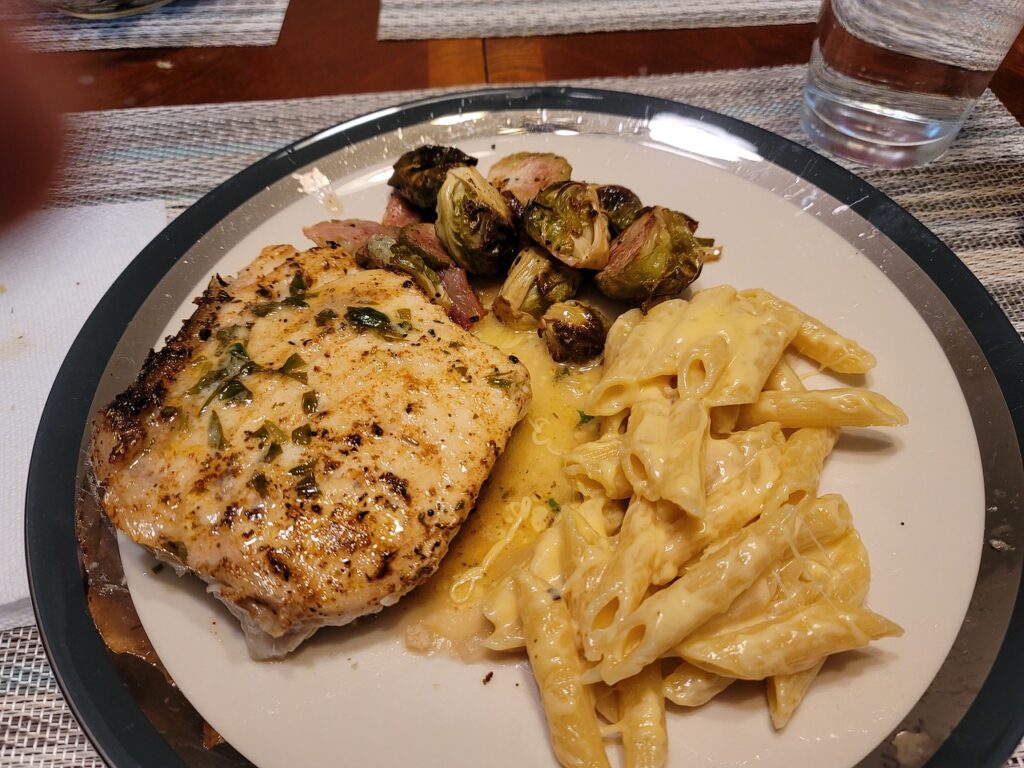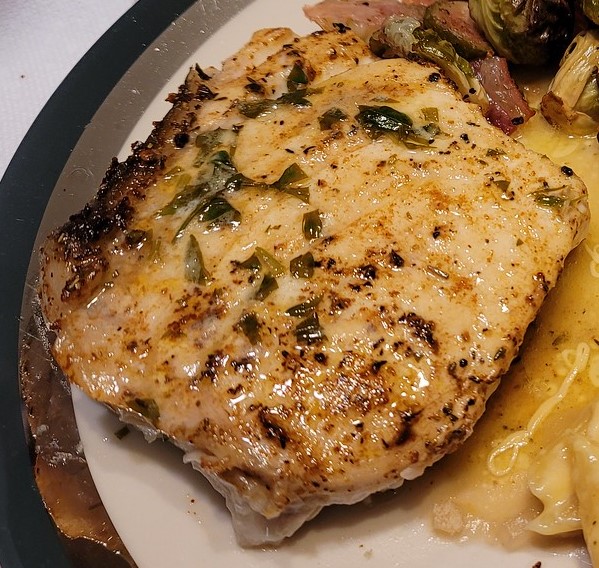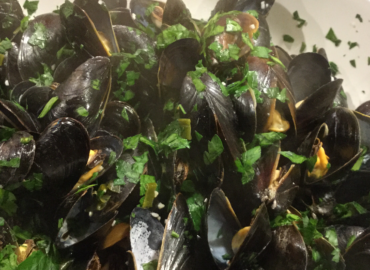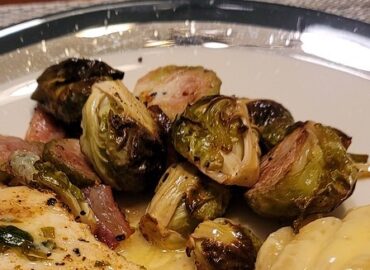I was cooking for my son, and he was in the mood for some fish. He is not a fan of salmon, loves flounder, and is not a big fan of mahi-mahi. I love flounder as well, but I always like to try something different and expose my son to different flavors, so I ended up finding some halibut. It has a firmer texture than flounder, but not as dense as mahi-mahi, so I wanted him to try it.
Both he and decided it was some of the best fish ever, restaurant or home cooked. Obviously, some of that credit goes to finding fresh, wild caught fish, but here is the recipe I used: pan-frying.
Prepping the Halibut
I am told by other chefs that to avoid halibut that will stick and fall apart in the pan, starting with dry fish is important. (Here I mean dry on the OUTSIDE; obviously you don’t want all the moisture pulled out from the meat itself.) I rinsed the halibut steaks in reserve osmosis filtered water, and then patted dry with paper towels. I then put them in a lasagna pan on the counter to come up to room temperature. They weren’t that cold, but I always like to cook meats at room temperature instead of straight out of the refrigerator; seems to retain more flavor.
I waited until right before I was ready to cook them, and then sprinkled the halibut with lemon juice, salt, and Penzey’s Northwoods seasoning. I love to use the Northwoods on pork and fish. It has a good flavor profile without being too spicy. On pork I put it on heavy, and for fish I lighten it up a bit.
For simpler flavor, you can just use salt and pepper to taste.
Use The Right Pan
You must choose the right pan to get the proper sear on your fish. Do NOT use a non-stick pan; besides adding chemical flavor to your food, it makes it harder to get the fish crispy outside. Always use a cast iron or stainless steel pan. If you are cooking for a larger group, make sure the pan is big enough so the fish don’t touch each other in the pan. They seem to cook correctly with space between the halibut steaks.
When you are ready to cook, get the pan hot (but not smoky) before adding your fish. Do this by letting it sit over medium-high heat for 1-2 minutes before you start cooking.
Add 2-4 tablespoons of butter to the pan. It will make some sizzle noise if the pan is hot enough. Let the butter melt completely, but start cooking the instant the better melts. Drop the halibut steaks into the butter before the butter starts to brown. If it has skin, I would start with the skin side down.
Do NOT Overcook
Overcooking is the most common mistake made with most meats, but it is worst when cooking fish. Also, keep in mind that fish continues to cook after you have removed it from the heat, so pulling it earlier than you think is wise.
TIP: The first side is done when you see the edges are opaque, and it’s browned underneath.
Sear the fish for 3-5 minutes. Then, flip the halibut, and let it cook for another 4-5 minutes or so (keep an eye on it, though, because cooking time will vary depending on thickness of fillet or steak).
TIP: Avoid moving the fish around! This is what helps it get a nice, browned sear.
You’ll know when your halibut is done when it has a golden brown crispy skin and springs back to touch. It should also flake easily with a fork. I also use a meat thermometer just like I do for pork and steak. The thickest part of the halibut should be around 130-135 degrees. If you are a sushi fan, you can pull it off at a lower temperature and it tastes great, but the texture is less flaky. Many people prefer it flaky, so go with 130-135. Remember, it continues to cook for a few minutes after you remove it. Transfer directly to dinner plates (we don’t want any juices lost 🙂
Sauce
Originally, I was going to prepare a creamy sauce, but couldn’t find a recipe I liked. This halibut was so good, it didn’t really need a sauce. I did end up preparing a simple sauce by melting butter and then putting in the juice of 2 fresh squeezed lemons. That heated up in maybe 60-90 seconds. After I plated the halibut, I just poured the butter/lemon over the top of the halibut. I sprinkled on top a little parsley I had already chopped for something else, and boom:

I finished it off with roasted brussel sprouts with bacon, and homemade cheese pasta.
Seriously, this was likely one of the top 5 best tasting fish entrees I have had anywhere. Kudo’s to the fish for doing the hard work, but I found the right way to prepare it.



